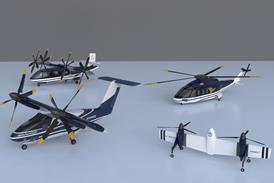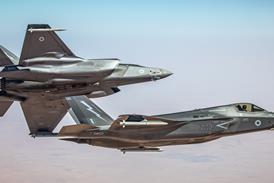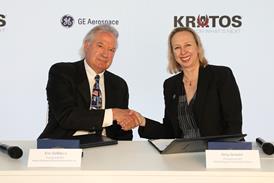Guy Norris/LOS ANGELES
Flight tests to clear the Matra BAe Dynamics (MBD) ASRAAM air-to-air missile on Royal Australian Air Force Boeing F/A-18s have revealed a flutter risk at much lower speeds than expected. The problem also affects the Raytheon AIM-9 now carried, and the RAAF is seeking ways to restore the F/A-18's full operational flight envelope.
The problems were discovered using two "worst case" configurations with ASRAAMs on the wingtips. Configuration 1 had Mk84 bombs on all four underwing stations and a centreline fuel tank. Configuration 2 had Mk84s outboard and tanks on the wing in-board wing and centreline stations.
Problems were found immediately on starting risk-reduction flights, when unexpectedly low damping was found in configuration 1. "The existence of low damping well within the cleared envelope raised considerable concern, and consequently part of the "risk reduction" exercise became a flutter investigation," says RAAF Aircraft Research and Development Unit test pilot Sqn Ldr Philip Arms. The tests also revealed that the inertia properties of the ASRAAM and AIM-9 are almost identical, although they differ aerodynamically. "The concern was that it implied we faced a problem today with the AIM-9, as well as with ASRAAM," says Arms.
With flutter possible at speeds 150kt (280km/h) lower than published in the flight manual, the RAAF faced a 30% reduction in the AIM-9 flight envelope.
Although subsequent test flights in September with a single AIM-9 expanded the flutter free envelope by 40kt, the RAAF wants longer term solutions.
The team says "...until system safety studies have been completed on the effectiveness of the AOC [active oscillation control - a device to improve ride quality] as a flutter suppression system, the recommendations from these test results have been to restrict the flight envelope to prevent flight into regions of known flutter. The magnitude of this reduction to operational capability is significant."
Various fixes are being studied including development of an active flutter suppression system, investigating asymmetric store configurations such as a single ASRAAM, and reviewing the requirement for a 15% flutter margin on the test envelope to see if there is more room for manoeuvre.
The RAAF may make the aircraft asymmetric by fitting pylons with varying mass and/or stiffness to the outboard wing hardpoints; moving the launcher on one wing tip forward or aft compared to the launcher on the opposite wing or adding mass to one of the wings.
Source: Flight International




















